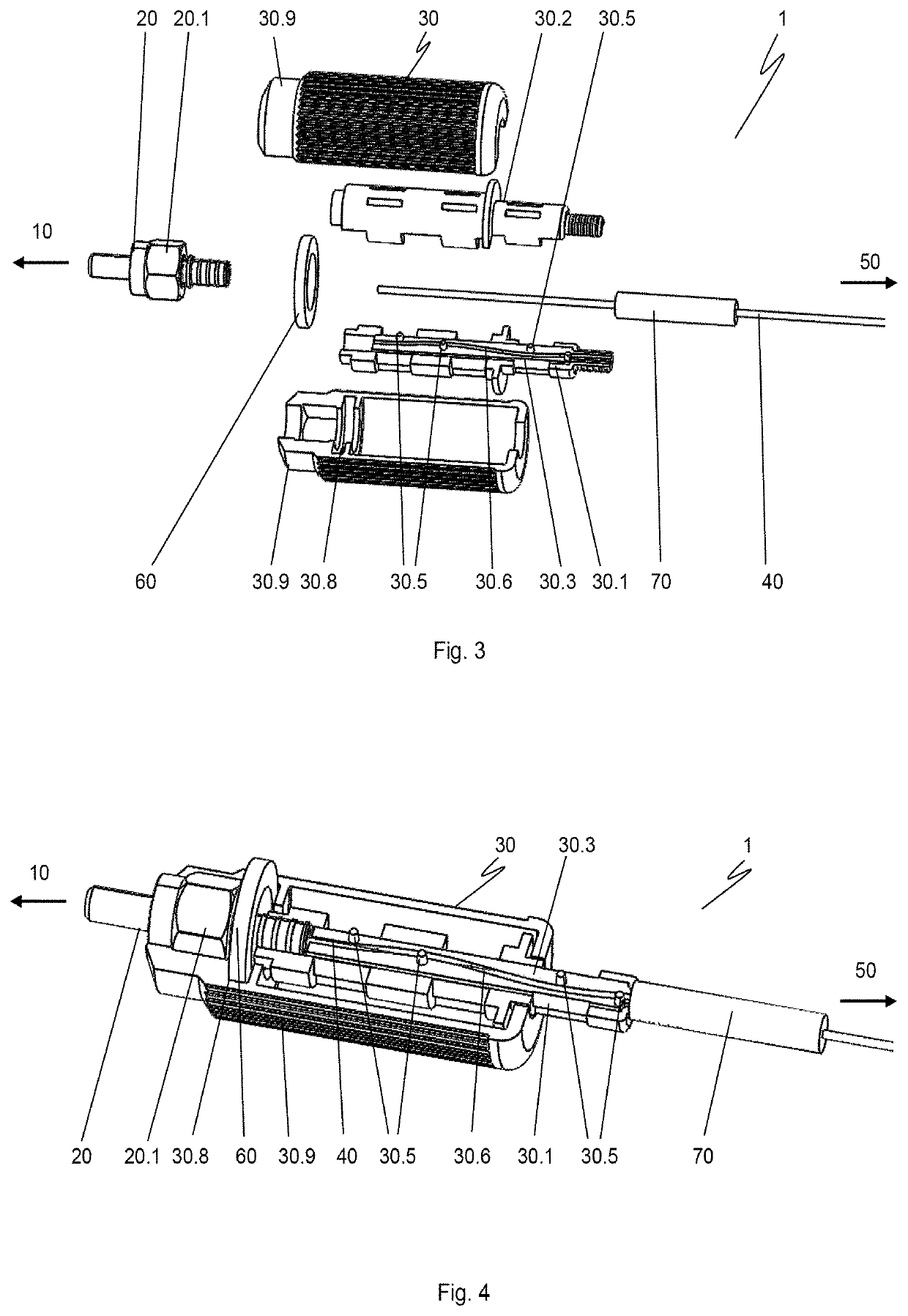Illumination system with a light guide and an emission element
a technology of light guide and emission element, which is applied in the field of illumination system, can solve the problems of evlt treatment requiring significantly higher laser power, affecting the quality of light beam, so as to achieve the effect of improving homogeneity or beam quality
- Summary
- Abstract
- Description
- Claims
- Application Information
AI Technical Summary
Benefits of technology
Problems solved by technology
Method used
Image
Examples
Embodiment Construction
"d_n">[0057]FIG. 1 schematically shows the setup of an illumination system 1 according to the invention. A medical PDT application is illustrated in exemplary fashion in this case.
[0058]In the shown example, the illumination system 1 consists of a laser light source 10, which emits light in a certain spectral range when in operation. For PDT or PIT applications, as described the outset, use is made of lasers which emit at a wavelength matched to a biochemically modified dye (photosensitizer) administered previously, usually in the visible range, for example in the green spectral range at 532 nm or in the red spectral range at 690 nm, for example. A light guide 40 is connected at its proximal end to the laser light source 10 using a connector 20. At the distal end, the light guide 40 has an emission element 50 which is embodied as a cylindrical diffuser. As a rule, multimodal quartz fibres are used as light guides 40, wherein the connectors 20 are embodied, as a rule, as coaxial plug...
PUM
 Login to View More
Login to View More Abstract
Description
Claims
Application Information
 Login to View More
Login to View More - R&D
- Intellectual Property
- Life Sciences
- Materials
- Tech Scout
- Unparalleled Data Quality
- Higher Quality Content
- 60% Fewer Hallucinations
Browse by: Latest US Patents, China's latest patents, Technical Efficacy Thesaurus, Application Domain, Technology Topic, Popular Technical Reports.
© 2025 PatSnap. All rights reserved.Legal|Privacy policy|Modern Slavery Act Transparency Statement|Sitemap|About US| Contact US: help@patsnap.com



